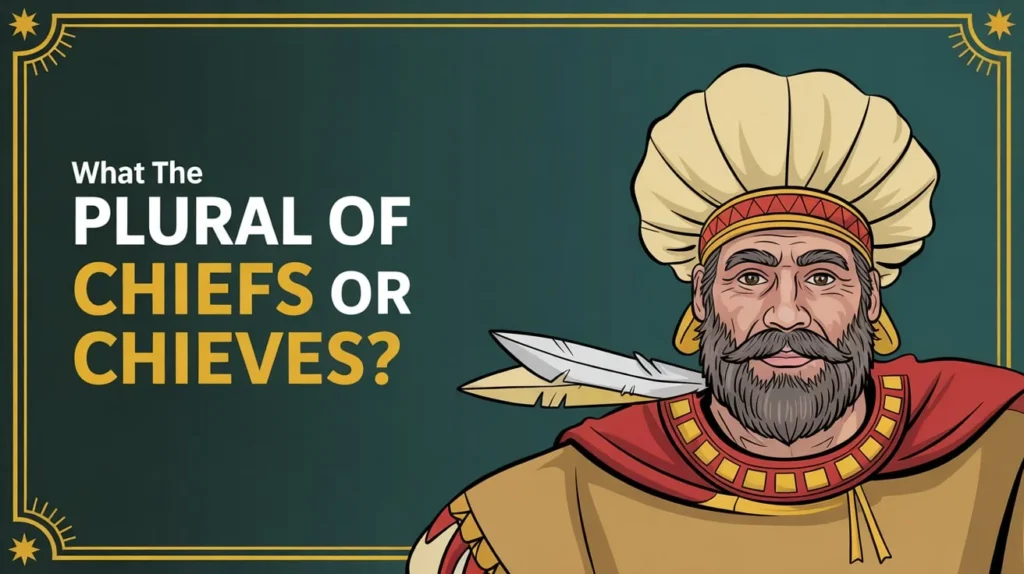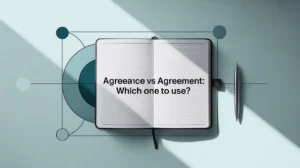The English language is filled with quirks and exceptions that can make even the most seasoned grammar experts second-guess their understanding. One of these peculiarities often arises when we talk about the plural form of the word “chief.” Is it chiefs or chieves? If you’ve found yourself pondering this question, you’re not alone. Many people get confused when trying to figure out which version is correct. In this comprehensive guide, we’ll dive deep into the singular and plural forms of “chief,” the rules behind their usage, and why “chiefs” is the proper plural, not “chieves.”
Understanding the difference between singular and plural words is essential not just for grammar purists but for anyone who wants to communicate clearly and confidently. Whether you’re writing an essay, giving a presentation, or simply chatting with friends, knowing the correct usage can make a world of difference. By the end of this post, you’ll not only understand the plural of “chief” but also grasp the rich history and linguistic nuances that shape how we use the word today.
So, let’s get started!
What Does “Chief” Mean?
Before diving into the complexities of singular and plural forms, it’s essential to understand what the word chief actually means. The term “chief” has several meanings across different contexts, but at its core, it refers to a leader, a head, or the most important person in a group.
Definition of “Chief” in Different Contexts
- Leader or Head: This is the most common definition of “chief.” A “chief” is often the person who leads or manages a group, organization, or community.
- Example: The chief of the department oversees all operations.
- A High-Ranking Officer: In some cases, a “chief” refers to a person holding a high rank, especially in military or police settings.
- Example: The police chief is responsible for law enforcement within the city.
- Chief as a Title: In certain cultures, such as indigenous tribes or small communities, a “chief” is a title given to the leader or head of the group.
- Example: The tribal chief made a decision after consulting with the elders.
- Primary or Most Important: It can also mean the most significant or primary in something.
- Example: The chief reason for the decision was financial stability.
In essence, the word “chief” signifies a position of authority, control, or leadership. Understanding its broad definition will help clarify its usage in both singular and plural contexts.
Chief Singular and Plural
Now that we understand what “chief” means, let’s break down the singular and plural forms.
Singular Form of “Chief”
When referring to a single leader or head, the word “chief” remains in its singular form. This is the default usage for the word when you’re talking about one individual.
- Example sentence: The chief of staff will address the media tomorrow.
- Example sentence: Each tribe had a chief who was revered by their people.
In these examples, “chief” clearly refers to a single person who holds a position of leadership or authority.
Plural Form of “Chief” (Chiefs)
When you refer to more than one leader or head, the plural form of “chief” is chiefs. Despite common misconceptions, the plural of “chief” is not “chieves.” This is an area where English grammar breaks from expected rules, and the reason behind this has both historical and linguistic explanations.
- Example sentence: The chiefs of the rival tribes met to negotiate peace.
- Example sentence: Several chiefs gathered at the conference to discuss economic growth.
The word “chiefs” follows the standard English rule for forming plurals of words that end in -f or -fe (like roof to roofs or belief to beliefs), which typically just add an -s in the plural form.
Why the Plural of “Chief” is “Chiefs” and Not “Chieves”?

The Role of English Pluralization Rules
In English, the formation of plural words can seem unpredictable at times. Generally, words ending in -f or -fe form their plurals by changing the f or fe to ves (like leaf becoming leaves or knife becoming knives). However, “chief” does not follow this typical pattern.
Why not?
The reason comes down to historical linguistic development. The word “chief” comes from Old French chef, which in turn comes from the Latin caput, meaning “head.” Unlike some other words ending in -f, “chief” didn’t adopt the -ves plural rule, perhaps due to its strong Latin influence or the way it was adapted into English from French.
Etymology and Linguistic History
The evolution of the word “chief” traces back to Old French, where it was spelled chef, meaning “head,” and was used to describe a person who was the leader or head of a group. This word eventually made its way into Middle English, keeping the same spelling and meaning. The plural form “chiefs” persisted as part of its journey into modern English.
Linguists believe that the plural form “chiefs” was influenced by how the word was used in these languages rather than strictly adhering to the pluralization rules for words ending in -f.
In short, while English does have rules for pluralizing words ending in -f, the history of the word “chief” played a significant role in determining its plural form. Therefore, “chiefs” is the grammatically correct form, and “chieves” is simply not used in the language.
Singular and Plural Usage in Sentences
Understanding when to use the singular form “chief” and the plural form “chiefs” in sentences is essential for correct grammar.
Singular Usage of “Chief”
The singular “chief” is used when referring to just one leader or individual in charge. Here are some examples:
- Example sentence: The chief is responsible for managing the team’s operations.
- Example sentence: He was promoted to chief after years of dedication.
Plural Usage of “Chiefs”
On the other hand, “chiefs” is used when referring to more than one leader or head. Here are some examples:
- Example sentence: The chiefs of the various tribes met to discuss new trade routes.
- Example sentence: The chiefs of the departments are attending the conference.
Origin of “Chief”
The origin of the word “chief” is fascinating and helps explain its current usage. As mentioned earlier, the word “chief” comes from the Old French chef, which itself derived from the Latin word caput, meaning “head.”
The term was originally used to describe someone who was the head of a group or community, a leader. Over time, the word evolved to describe various types of leaders in different contexts, from tribal chiefs to corporate executives. It has retained this core meaning of leadership, authority, and control.
Synonyms for the Word “Chief”
While “chief” is a widely used term, there are several synonyms that can convey similar meanings depending on the context. Here are a few common synonyms:
- Leader: A person who leads or commands a group, organization, or country.
- Head: The leader or director of a group or organization.
- Director: A person who is in charge of a particular department or organization.
- Commander: A military leader in charge of a group or unit.
- Principal: The leader of a school or other institution.
- Captain: A leader in certain groups, such as sports teams or military units.
- Boss: A more informal term for a person in charge at work.
Each of these synonyms can carry slightly different connotations based on the context in which they are used.
FAQs About the Plural of Chief
Is “chieftain” the same as “chief”?
While both terms refer to leaders, “chieftain” is often used to describe the leader of a tribe or clan, particularly in historical or indigenous contexts. “Chief” is more general and can apply to leaders in various contexts.
Can “chieves” be used as a plural form of “chief”?
No, “chieves” is not a recognized plural form of “chief.” The correct plural is “chiefs.”
Why do some people mistakenly say “chieves”?
This mistake likely arises because English speakers sometimes mistakenly apply the -ves plural rule to words that end in -f, like “chief.” However, “chief” follows its own historical linguistic pattern, and “chieves” is simply incorrect.
What is the plural of “chief” when referring to multiple types of leaders?
The plural of “chief” remains “chiefs,” regardless of the type of leadership position being discussed. For example, “The chiefs of the fire departments gathered at the conference.”
Conclusion
To sum up, the plural form of “chief” is chiefs, not “chieves.” This irregularity in English grammar stems from the word’s historical evolution from Latin and Old French. Understanding the proper usage of “chief” in both its singular and plural forms is essential for clear communication, whether you’re writing an academic paper, a business report, or simply having a conversation.
By following the rules for pluralizing “chief” and avoiding common mistakes, you can ensure that your language remains precise and professional. So next time you refer to a group of leaders, remember: it’s always “chiefs,” never “chieves.”




